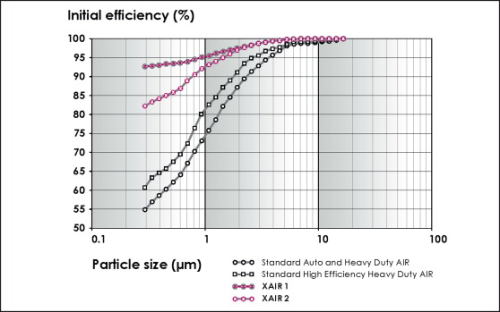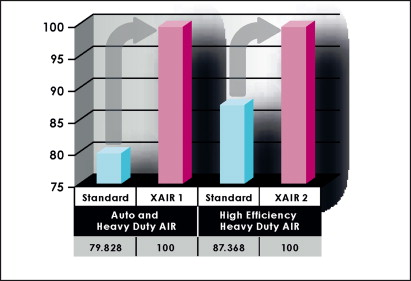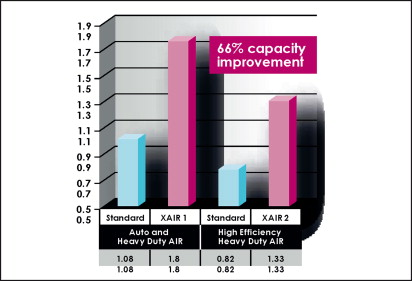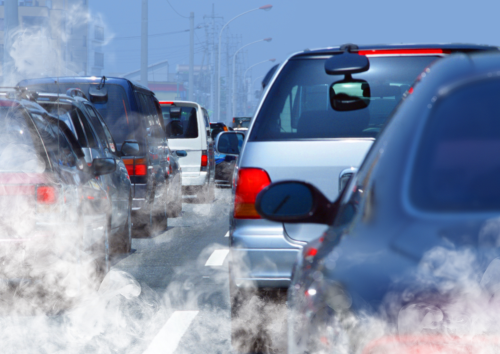



Clean air is considered to be a basic requirement of human health and well-being. However, the quality of air and the increasing amount of air pollution continue to pose a significant threat to people's health worldwide.
The WHO (World Health Organization) defines the air pollution problem in the following manner:
Air pollution is considered to be contamination of the indoor or outdoor environment by any chemical, physical or biological agent that modifies the natural characteristics of the atmosphere.
Household combustion devices, motor vehicles, industrial facilities and forest fires are common sources of air pollution. Pollutants of major public health concern include particulate matter, carbon monoxide, ozone, nitrogen dioxide and sulphur dioxide. Outdoor and indoor air pollution cause respiratory and other diseases, which can be fatal.
Also noted by the WHO assessment of the burden of disease due to air pollution, more than 2 million premature deaths each year can be attributed to the effects of urban outdoor air pollution and indoor air pollution (these are caused by the burning of solid fuels). More than half of this disease burden is borne by the populations of developing countries.
Challenges caused by air pollution create opportunities for companies in the filtration market to develop further and demonstrate air filtration solutions to help to keep outdoor air cleaner and healthier.
Specific contaminants – soot
For many years soot has been recognised as a key contaminant in the environment, especially in metropolitan areas where air pollution is at the highest levels. For this reason, soot has also become a key recognised contaminant for different filtration-related applications. Some examples can be found in automotive air intake and cabin air systems, as well as dust pollution control applications.
A suitable definition of soot might describe it as a black, powdery substance that consists mainly of carbon and is formed through the incomplete combustion of wood, coal, diesel oil, or other materials. Soot absorbs energy from sunlight rather than reflecting it, so many believe it to be a cause of global warming, especially when it settles on snow and ice, reducing their reflectivity. Soot particles in the air are a contributing factor to respiratory diseases.
In automotive, the importance of soot filtration has grown in air intake applications. Smog in cities' downtown areas is a combination of soot, dust and fog with sulphur dioxide originating from combustion processes. Even if soot is generated mainly residual particles from exhausts, it is also proven that a vehicle's air intake system contributes to total engine emissions. Soot contaminants pass out of the exhaust, including crankcase emissions, and this is why soot is also becoming a contaminant for air intake filters.
The typical diameter of a soot particle is in the range 0.1-10 microns (PM10), and this particle size is particularly dangerous for health. Although newly developed, more efficient engines generate a lower amount of soot, the average dimension of the soot particle is continuously reducing to this most critical particle size.
The main impact of soot on filtration performance, particularly in combination with water (air humidity), is that it will clog the filters in a shorter time than conventional dust. This challenges the filter's stability and performance and consequently increases the potentialdamage for vehicle engines. As well as the increasing problems with soot, the requirements for filters get more demanding in terms of efficiency and filter life. In addition, there is a need for filters to get smaller in size. This is providing filter media and filter manufacturers with new challenges.
Test standards
The test standard used for engine air intakes is ISO5011. The current norm has some limitations and many companies are using other tests to complement the current standard. The industry is waiting for a new official ‘ISO’ that will better simulate real life performance tests with ‘certified soot’, in addition to the currently used ‘certified dust’.
Emission regulations are driving air filtration testing to more realistic conditions, moving from DHC (Dust Holding Capacity) to SHC (Soot Holding Capacity).
New developments
Ahlstrom Filtration has developed and launched a family of next generation air filtration products. These products are designed to achieve good filtration performance under the realistic and more stringent conditions of soot contamination. The new product portfolio is called XAIR and the first application is in engine air intake filter media for automotives.
Engine air filters prevent abrasive particulate matter from entering the engine's cylinders, where it would cause mechanical wear and oil contamination. The importance of the engine air system has recently increased because of engine exhaust particulate and emission regulations such as EURO 6.
XAIR is a new portfolio of automotive and heavy duty air filter media that can achieve good performance in soot filtration and dust holding capacity. This can have a positive impact on:
• Engine lifetime• Engine emissions• Fuel consumption
Initial efficiency and fractional efficiency for fine dust particles of traditional filter media can be low in some applications. XAIR has been developed to provide good initial efficiency at low particle size.
The increase of gravimetric efficiency in comparison with traditional air filter media allows the design of air intake systems with reduced soot emissions – a 66% increase in SHC (Soot Holding Capacity) in comparison with traditional air filter media. This can result in:
• Increased useage/mileage• Smaller filters• Compact air filter systems
XAIR has grammage and thickness in the same range of traditional air grades. However, the higher soot holding capacity, as well as dust holding capacity, means that smaller filtration systems can be designed.
Main benefits
A summary of the main benefits of the new media include:
• Good efficiency in soot filtration and dust holding capacity when compared to standard products.• A clear increase in filtration performance in automotive and heavy duty air applications when compared to standard products.• The pressure generated by the media itself is lower than a conventional heavy duty media, resulting in a reduced initial pressure drop in filters and improving the air flow.• A reduction in fuel consumption.• Good media processability in traditional high speed pleating machinery.• The filter media is available in cure-free, fast curing, flame retardant and water durable forms.





